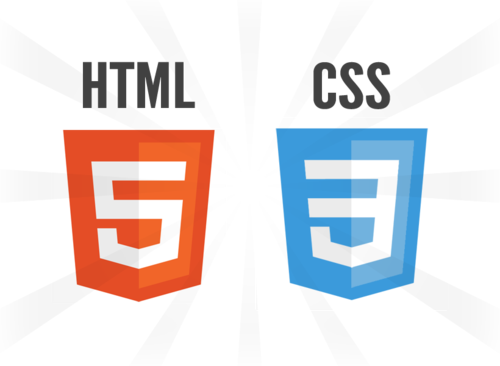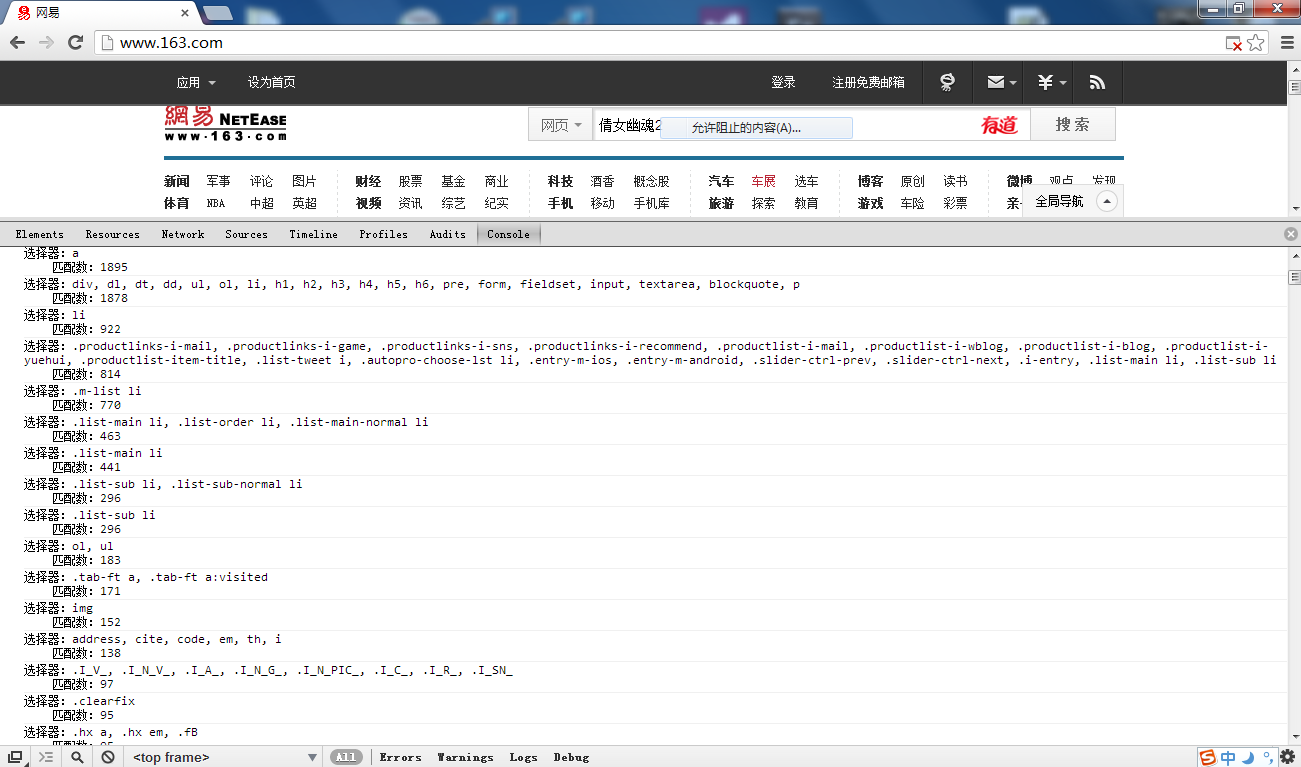Recommended 6 articles about querySelectorAll()
Previously I introduced some newly added selectors in HTML5, namely querySelector(), querySelectorAll() and getElementsByClassName(). These three have their own unique functions. If necessary, you can read the relevant content in HTML5 actual combat and analysis. Today I will introduce to you the classList attribute. What exactly does the classList attribute do? Let’s leave classList alone for now. We consider the question, that is, how do we delete one of the class names among elements with multiple class names? Menglong struggled with his brain and finally came up with a way to achieve it. Delete the class name meng among the three class names li, meng and long. The code is as follows: HTML code
Menglong Station
JavaScript code//Get the p of the class name meng to be deleted var1. How to use getElementsByClassName()? Summary of getElementsByClassName() instance usage

##Introduction: We have introduced some new options in HTML5 The handlers are querySelector(), querySelectorAll() and getElementsByClassName(). These three have their own unique functions. If necessary, you can read the relevant content in HTML5 actual combat and analysis. Today I will introduce to you the classList attribute. What exactly does the classList attribute do? Let’s leave classList alone for now. Let's consider such a question, then...
2. HTML5 actual combat and analysis of the classList attribute

Introduction: I have introduced some newly added selectors in HTML5, namely querySelector(), querySelectorAll() and getElementsByClassName(). These three have their own unique functions. If necessary, you can read the relevant content in Html5 actual combat and analysis. Today I will introduce to you the classList attribute.
3. HTML5 actual combat and analysis of CSS selector——getElementsByClassName() method

Introduction: The querySelector() method and querySelectorAll() method in HTML5 have been introduced to you in the previous articles. I wonder how well you understand it? Review here First, the querySelector() method returns the first element that matches the passed CSS selector; the querySelectorAll() method returns all elements that match the passed CSS selector, which is a NodeList object. After a brief review, let me share a new method-getElementsByClassName() method.
4. HTML5 actual combat and analysis of CSS selector——querySelectorAll()

Introduction: For versions below android 5.0, modify style.xml and add the following code: style name=AppTheme parent=Theme.AppCompat.Light.DarkActionBar> item name=android:actionBarSize>40dpitem> item name =android:windowContentOverl
##5.Questions about querySelectorAll() under IE8_javascript skills
Introduction: Among the new features of IE8, it is mentioned that the querySelector() and querySelectorAll() methods will be supported. I won’t go into how to use them here. I just recorded a problem I encountered when using them.6.
A CSS coverage test script implemented in 20 lines of code_javascript skills

The above is the detailed content of Recommended 6 articles about querySelectorAll(). For more information, please follow other related articles on the PHP Chinese website!

Hot AI Tools

Undresser.AI Undress
AI-powered app for creating realistic nude photos

AI Clothes Remover
Online AI tool for removing clothes from photos.

Undress AI Tool
Undress images for free

Clothoff.io
AI clothes remover

Video Face Swap
Swap faces in any video effortlessly with our completely free AI face swap tool!

Hot Article

Hot Tools

Notepad++7.3.1
Easy-to-use and free code editor

SublimeText3 Chinese version
Chinese version, very easy to use

Zend Studio 13.0.1
Powerful PHP integrated development environment

Dreamweaver CS6
Visual web development tools

SublimeText3 Mac version
God-level code editing software (SublimeText3)

Hot Topics
 1668
1668
 14
14
 1428
1428
 52
52
 1329
1329
 25
25
 1273
1273
 29
29
 1256
1256
 24
24
 HTML: The Structure, CSS: The Style, JavaScript: The Behavior
Apr 18, 2025 am 12:09 AM
HTML: The Structure, CSS: The Style, JavaScript: The Behavior
Apr 18, 2025 am 12:09 AM
The roles of HTML, CSS and JavaScript in web development are: 1. HTML defines the web page structure, 2. CSS controls the web page style, and 3. JavaScript adds dynamic behavior. Together, they build the framework, aesthetics and interactivity of modern websites.
 The Future of HTML, CSS, and JavaScript: Web Development Trends
Apr 19, 2025 am 12:02 AM
The Future of HTML, CSS, and JavaScript: Web Development Trends
Apr 19, 2025 am 12:02 AM
The future trends of HTML are semantics and web components, the future trends of CSS are CSS-in-JS and CSSHoudini, and the future trends of JavaScript are WebAssembly and Serverless. 1. HTML semantics improve accessibility and SEO effects, and Web components improve development efficiency, but attention should be paid to browser compatibility. 2. CSS-in-JS enhances style management flexibility but may increase file size. CSSHoudini allows direct operation of CSS rendering. 3.WebAssembly optimizes browser application performance but has a steep learning curve, and Serverless simplifies development but requires optimization of cold start problems.
 The Future of HTML: Evolution and Trends in Web Design
Apr 17, 2025 am 12:12 AM
The Future of HTML: Evolution and Trends in Web Design
Apr 17, 2025 am 12:12 AM
The future of HTML is full of infinite possibilities. 1) New features and standards will include more semantic tags and the popularity of WebComponents. 2) The web design trend will continue to develop towards responsive and accessible design. 3) Performance optimization will improve the user experience through responsive image loading and lazy loading technologies.
 HTML vs. CSS vs. JavaScript: A Comparative Overview
Apr 16, 2025 am 12:04 AM
HTML vs. CSS vs. JavaScript: A Comparative Overview
Apr 16, 2025 am 12:04 AM
The roles of HTML, CSS and JavaScript in web development are: HTML is responsible for content structure, CSS is responsible for style, and JavaScript is responsible for dynamic behavior. 1. HTML defines the web page structure and content through tags to ensure semantics. 2. CSS controls the web page style through selectors and attributes to make it beautiful and easy to read. 3. JavaScript controls web page behavior through scripts to achieve dynamic and interactive functions.
 HTML: Building the Structure of Web Pages
Apr 14, 2025 am 12:14 AM
HTML: Building the Structure of Web Pages
Apr 14, 2025 am 12:14 AM
HTML is the cornerstone of building web page structure. 1. HTML defines the content structure and semantics, and uses, etc. tags. 2. Provide semantic markers, such as, etc., to improve SEO effect. 3. To realize user interaction through tags, pay attention to form verification. 4. Use advanced elements such as, combined with JavaScript to achieve dynamic effects. 5. Common errors include unclosed labels and unquoted attribute values, and verification tools are required. 6. Optimization strategies include reducing HTTP requests, compressing HTML, using semantic tags, etc.
 HTML vs. CSS and JavaScript: Comparing Web Technologies
Apr 23, 2025 am 12:05 AM
HTML vs. CSS and JavaScript: Comparing Web Technologies
Apr 23, 2025 am 12:05 AM
HTML, CSS and JavaScript are the core technologies for building modern web pages: 1. HTML defines the web page structure, 2. CSS is responsible for the appearance of the web page, 3. JavaScript provides web page dynamics and interactivity, and they work together to create a website with a good user experience.
 HTML: Is It a Programming Language or Something Else?
Apr 15, 2025 am 12:13 AM
HTML: Is It a Programming Language or Something Else?
Apr 15, 2025 am 12:13 AM
HTMLisnotaprogramminglanguage;itisamarkuplanguage.1)HTMLstructuresandformatswebcontentusingtags.2)ItworkswithCSSforstylingandJavaScriptforinteractivity,enhancingwebdevelopment.
 From Text to Websites: The Power of HTML
Apr 13, 2025 am 12:07 AM
From Text to Websites: The Power of HTML
Apr 13, 2025 am 12:07 AM
HTML is a language used to build web pages, defining web page structure and content through tags and attributes. 1) HTML organizes document structure through tags, such as,. 2) The browser parses HTML to build the DOM and renders the web page. 3) New features of HTML5, such as, enhance multimedia functions. 4) Common errors include unclosed labels and unquoted attribute values. 5) Optimization suggestions include using semantic tags and reducing file size.




